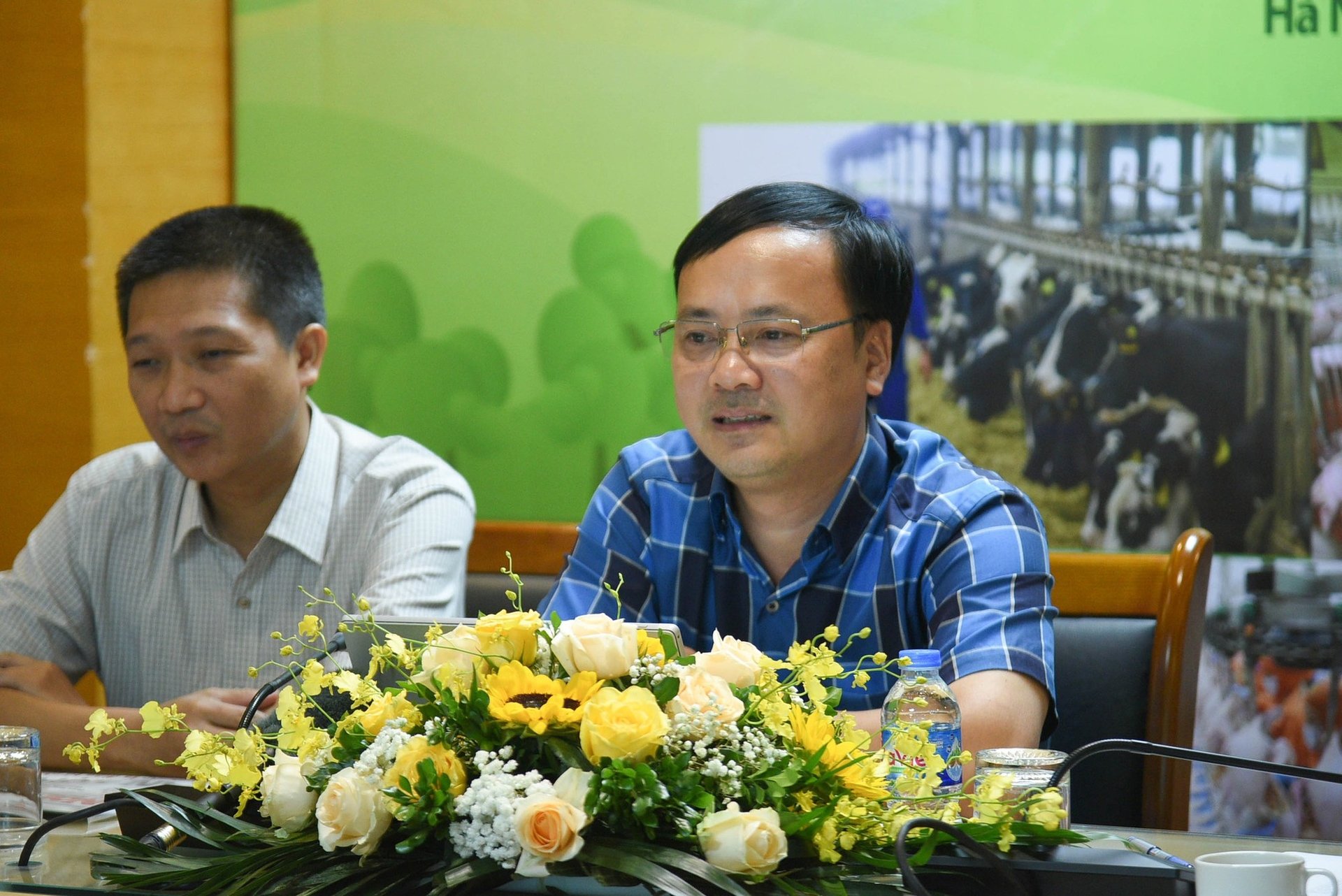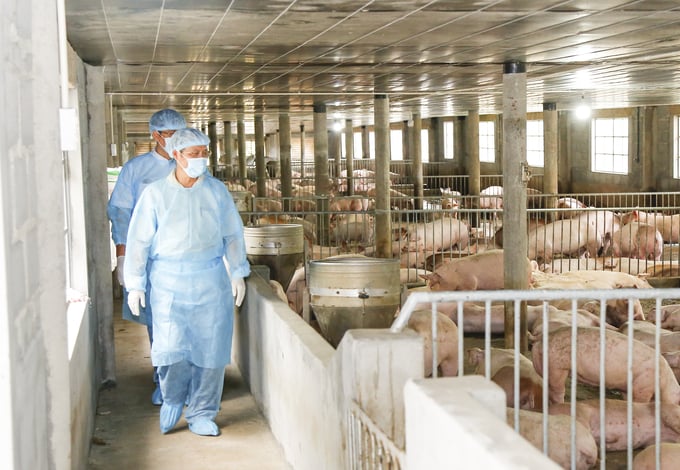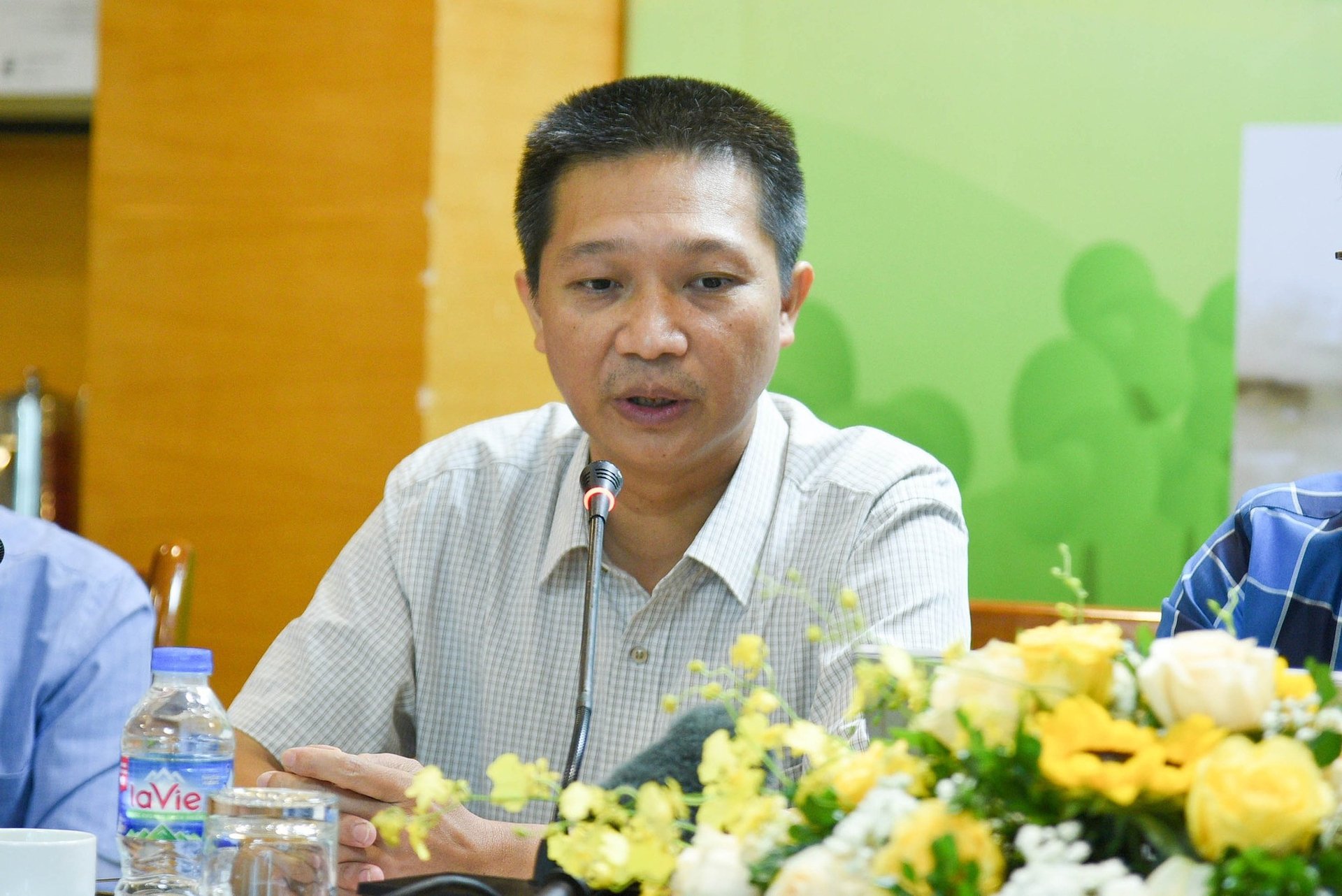November 28, 2025 | 00:00 GMT +7
November 28, 2025 | 00:00 GMT +7
Hotline: 0913.378.918
November 28, 2025 | 00:00 GMT +7
Hotline: 0913.378.918

Phan Quang Minh, Deputy Director of the Department of Animal Health (Ministry of Agriculture and Rural Development), informed that there are more than 2,400 facilities and farming areas in 57 provinces and cities across the country certified as disease-free. Photo: TQ.
On July 25, the National Agricultural Extension Center (NAEC) in collaboration with Nong Thon Ngay Nay/Dan Viet newspaper and De Heus Group held a seminar "Building disease-free livestock areas, promoting processing and export of meat and livestock products”.
Phan Quang Minh, Deputy Director of the Department of Animal Health (Ministry of Agriculture and Rural Development), informed that in the first six months of 2023, diseases in livestock and poultry show signs of decrease, and there is no outbreak of foot and mouth disease in the country. “All outbreaks of avian influenza have been eliminated. As for lumpy skin disease, we can see initial success in vaccine research. Up to the present, only 2 communes across the country have records of a lumpy skin disease outbreak. 40 communes report on African swine fever outbreaks of less than 21 days long”.
The Department of Animal Health has recently coordinated with localities and businesses to build 1 disease-free district level region and 235 facilities, including 93 disease-free poultry, 130 disease-free pig facilities, and 12 disease-free facilities for other livestock.
To sum up, Vietnam currently has more than 2,400 facilities and livestock areas in 57 provinces and cities certified as disease-free. There is 1 province-level region, 38 district-level regions, 228 commune-level regions and nearly 2,200 livestock establishments. Classified by species, there are more than 1,000 facilities safe from poultry diseases, more than 1,300 facilities safe from cattle diseases, and 47 areas safe from rabies.
The Department of Animal Health will continue to support localities and businesses to build chains and areas that are safe from livestock and poultry diseases. The goal is to successfully build disease-free livestock production chains and areas in the Southeast as per Vietnam's regulations and standards of the World Organization for Animal Health (WOAH, founded as OIE).
According to Nguyen Van Huong, Deputy Head of the Department of Agricultural Extension, Livestock Production and Animal Health (NAEC), since 2016 NAEC has built pilot models for facilities to be safe from pigs and poultry diseases in 5 provinces in the Southeast region and 3 provinces in the Red River Delta. Through training activities, science and technology transfer as well as model construction supports, the center has assisted in the recognition of 188 disease-free livestock models.
After successfully implementing the disease-free livestock models, the Ministry of Agriculture and Rural Development has approved NAEC to continue deploying and replicating the disease-free models in three provinces in the Red River Delta and a province in the Central region (Thanh Hoa).

Through training activities, science and technology transfer as well as model construction supports, NAEC has assisted in the recognition of 188 disease-free livestock models. Photo: TQ.
Sharing important solutions to protect livestock against diseases as well as experience in building a closed livestock linkage chain for livestock product export, Nguyen Quang Hieu, Director of External Relations, De Heus Vietnam Co., Ltd, emphasized the challenges Vietnam's livestock industry has to face with the two biggest risks being price and disease.
“Livestock prices fluctuate constantly in accordance with the market, so we cannot intervene, and the risk of disease mainly comes from the care and management stage. We can control the disease, but if an epidemic occurs, it will be very difficult to restore livestock production, followed by great risk of pathogens left in the environment”.

At the seminar, Nguyen Quang Hieu, Director of External Relations, De Heus Vietnam Co., Ltd, emphasized the challenges Vietnam's livestock industry has to face with the two biggest risks being price and disease. Photo: TQ.
Facing the current situation, right from the initial stage, the company has focused on disease control particularly for breeding herds, considering this the key factor that determines the success of its investment in livestock production.
De Heus plans breeding complexes in a scientific way to minimize disease transmission from one group of animals to another, applies modern technology such as automation to reduce risks, uses silos to preserve animal feed, and reduces plastic packaging.
From now to 2024, De Heus will organize information dissemination, provide training and guidance for at least 50% of households, establishments and farms that raise chickens in the buffer zone; carry out periodic monitoring to determine the level of circulation of pathogens according to regulations; control and prevent potential disease outbreaks; invest in disease-free districts recognized by the Department of Animal Health.
Translated by Samuel Pham

(VAN) According to Mr. Vo Minh Thanh, Director of the Tay Ninh Department of Agriculture and Environment, Resolution 57 has created a new development pathway for the locality, shifting from traditional toward modern agriculture.
/2025/11/26/4909-2-154329_878.jpg)
(VAN) Pearl grouper farming in HDPE cages not only delivers economic efficiency but also contributes to protecting the environment, creating jobs, and promoting marine-based experiential tourism.

(VAN) The model of making a living under the forest canopy through the agroforestry system in Van Son commune, Bac Ninh province, is expected to generate an annual income of approximately VND 30 million/ha.

(VAN) Many enterprises in Can Tho are harnessing natural energy and reducing greenhouse gas emissions in their production processes, thereby contributing to the promotion of a sustainable green transition.
/2025/11/24/3536-2-112800_176.jpg)
(VAN) Dong Nai now has tens of thousands of hectares of forests certified for sustainable management, and this area will continue to be expanded in the coming period.

(VAN) Vinh Ha hamlet (Dai Xuyen commune, Hanoi) is shifting away from small-scale farming as households adopt bioscurity into their breeder chicken models.

(VAN) Heavy rains make aquatic species more vulnerable to disease. Proactive water management and high-tech systems help farmers prevent outbreaks and protect yields.